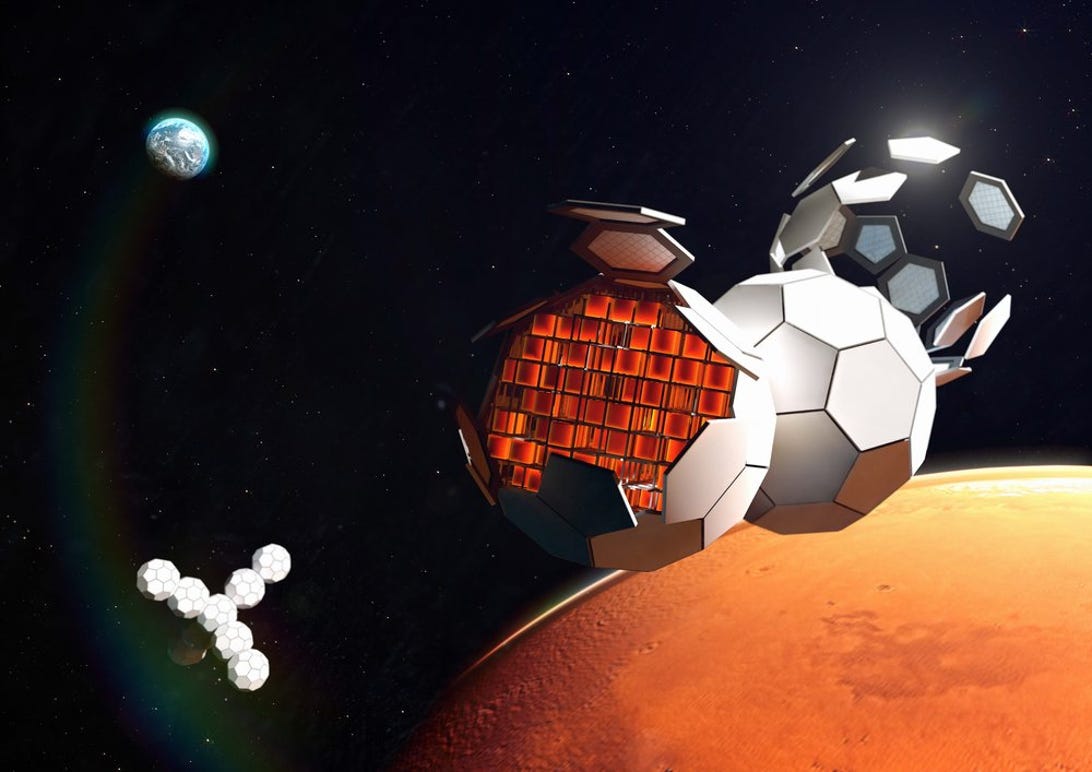

Artist's depiction of a future Tesserae self-assembling space station in orbit around Mars.
MIT Space Exploration Initiative / TU Dortmund Fraunhofer InstituteOn Friday SpaceX launched the first fully private mission to the International Space Station, but the newly minted astronauts won't just be playing tourists in orbit. Instead, they'll be conducting a number of experiments, including a state-of-the-art building technique that could inform how future space stations come together.
The Axiom-1 mission is sending former NASA astronaut Michael Lopez-Allegria, American pilot and adventurer Larry Connor, investor and former Israeli fighter pilot Eytan Stibbe and Canadian entrepreneur and executive Mark Pathy to the ISS for an eight-day stay.
The team's research agenda includes work with an air filtration device, cellular biology experiments and a robotic swarm of self-assembling tiles that will be of special interest to future astronauts.
The tiles are an early prototype of "Tesserae," or Tessellated Electromagnetic Space Structures for the Exploration of Reconfigurable, Adaptive Environments, developed by an MIT Media Lab team led by Ariel Ekblaw.
The hexagonal and pentagonal tiles are designed to coordinate via control code and self-assemble via "electro-permanent magnets." The tiles are also capable of sealing to create a pressurized environment. The below video illustrates how a full-scale example of the technology might come together.
The research builds on a previous test aboard the station that saw seven tiles assemble in microgravity. This iteration of the experiment will involve using a set of tiles that work with Raspberry Pi controllers; they'll be released in an aisleway of the ISS to self-assemble.
"The latest prototypes include an extensive suite of sensing and electro-permanent magnet actuation for full diagnostic capability (determining 'good' and 'bad' bonds between tiles as they join) and structure reconfigurability," reads NASA's action plan for the experiment.
An Axiom Space statement adds that the research will "explore a new frontier for in-orbit construction of satellites and future space habitats."
If all goes well, MIT and Ekblaw hope that the technology will eventually be used for geodesic dome habitats beyond Earth, microgravity concert halls and space cathedrals.
But before then, the experiment is set to begin with more trivial concerns: The first item on the research agenda for the project is making sure the system is fully charged.









 Add Category
Add Category